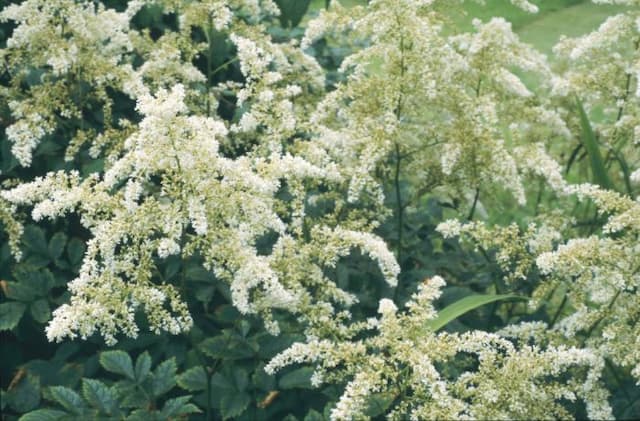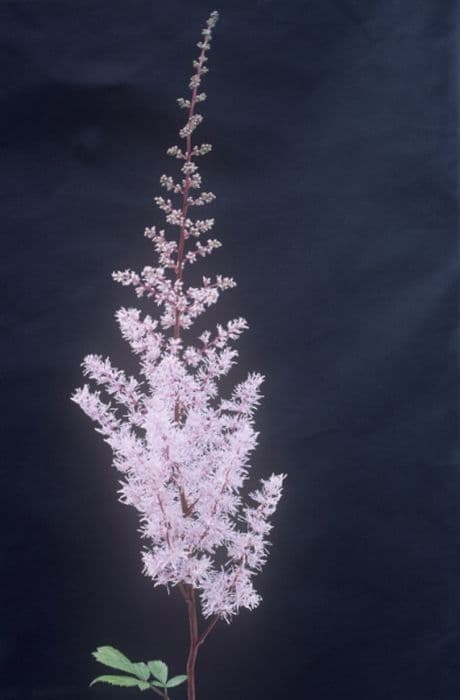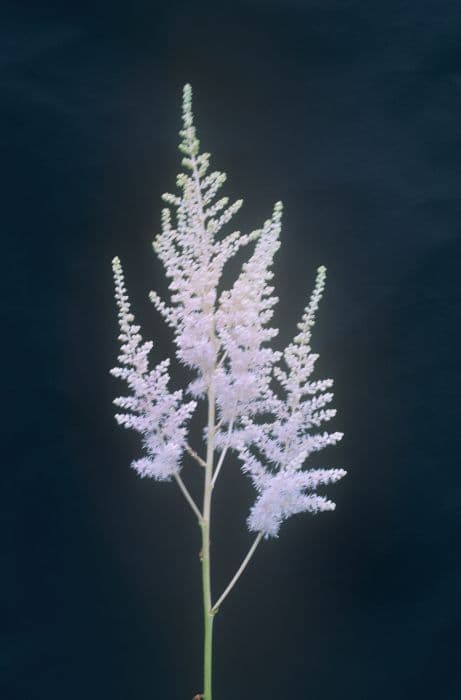Irving's Saxifrage Saxifraga 'Jenkinsiae' (× irvingii) (7)

ABOUT
The plant known commonly as Saxifrage features an attractive appeal with a rosette-forming habit. Its leaves are generally rounded, somewhat fleshy, and can have a slightly puckered surface, adding to its textured look. The foliage tends to display a soft green color, which often provides a lush backdrop for its blooms. The flowers emerge on slender stalks above the foliage and consist of clusters of small, star-shaped blossoms. These flowers can exhibit shades of white, pink, or sometimes a pale yellow, commonly with contrasting centers or markings that add to their visual interest. The arrangement of the flowers in a loose, airy cluster contributes to the plant's delicate and charming appearance. Saxifrage's overall form is neat and compact, with a tendency to spread slowly, forming a dense mat that can serve as ground cover. The visual appeal of this plant lies in its graceful growth pattern and the subtle beauty of its floral display.
About this plant
 Names
NamesFamily
Saxifragaceae
Synonyms
Jenkins' Saxifrage, Irving's Saxifrage
Common names
Saxifraga × irvingii
 Toxicity
ToxicityTo humans
Information regarding the specific toxicity of Saxifrage to humans is generally not well documented, suggesting that it is not considered highly toxic. However, it is always wise to exercise caution and avoid ingesting plants that are not explicitly meant for consumption, as some may cause mild stomach upset or allergic reactions in sensitive individuals.
To pets
Like humans, there is limited information on the toxicity of Saxifrage to pets. It is not commonly listed among plants that are known to be poisonous to pets. However, pet owners should still prevent their pets from eating decorative plants as they can sometimes cause mild gastrointestinal discomfort or distress if ingested.
 Characteristics
CharacteristicsLife cycle
Perennials
Foliage type
Evergreen
Color of leaves
Green
Flower color
White
Height
0.5 feet (15 cm)
Spread
1 feet (30 cm)
Plant type
Herb
Hardiness zones
7
Native area
Hybrid
Benefits
 General Benefits
General Benefits- Easy to Grow - Saxifraga 'Jenkinsiae' is known for being low maintenance and easy to care for, making it an excellent choice for novice gardeners.
- Aesthetic Appeal - With its attractive foliage and dainty flowers, it can enhance the visual appeal of gardens, rockeries, or terrariums.
- Pollinator Friendly - The flowers can attract pollinators such as bees and butterflies, which are essential for a healthy ecosystem.
- Drought Tolerance - Once established, it has good drought tolerance, requiring less water and reducing the need for frequent irrigation.
- Soil Erosion Control - This plant can help to stabilize soil in rock gardens or slopes, preventing erosion with its root system.
- Seasonal Interest - It provides seasonal interest with its blooming period and changing foliage through the seasons.
- Use in Alpine & Rock Gardens - Saxifraga 'Jenkinsiae' is particularly well-suited for alpine and rock gardens, where it can thrive in the crevices of stones.
 Medical Properties
Medical PropertiesThis plant is not used for medical purposes.
 Air-purifying Qualities
Air-purifying QualitiesThis plant is not specifically known for air purifying qualities.
 Other Uses
Other Uses- Photography Scenery: Saxifraga can be used to add natural beauty to macro photography compositions, serving as a detailed and intricate subject.
- Topiary Accent: The small and delicate form of Saxifraga can be included in topiary gardens to fill tiny spaces and add complexity to the designs.
- Educational Tool: Saxifraga species can be used in botanical studies to educate students on alpine plant adaptations and survival mechanisms.
- Miniature Garden Feature: Saxifraga works well as a feature plant in fairy gardens or other miniature landscapes due to its compact size.
- Artistic Inspiration: The unique form and structure of Saxifraga can serve as inspiration for artists, particularly in botanical illustration.
- Green Roof Planting: Because of its tolerance for rocky substrates, Saxifraga can be used in green roof installations that mimic alpine environments.
- Ice Dyeing: The flowers and leaves of Saxifraga can be used in the ice dyeing process to create organic patterns on fabric with natural colors.
- Traditional Craft Material: Dried Saxifraga can be incorporated into traditional crafts, like pressed flower arrangements or natural decorative wreaths.
- Culinary Decoration: Although not widely known for its culinary uses, Saxifraga flowers could be used as a delicate, edible garnish for desserts and specialty dishes.
- Seasonal Festivities: Live Saxifraga plants or cuttings can be integrated into seasonal festival decorations, especially in regions where they naturally occur.
Interesting Facts
 Feng Shui
Feng ShuiThe Saxifraga is not used in Feng Shui practice.
 Zodiac Sign Compitability
Zodiac Sign CompitabilityThe Saxifraga is not used in astrology practice.
 Plant Symbolism
Plant Symbolism- Determination: Saxifraga, commonly known as rockfoil, is a plant that often grows in rocky, challenging terrains. The symbolic meaning of determination is derived from the plant's tenacious ability to thrive in such inhospitable environments.
- Perseverance: Similar to determination, rockfoil symbolizes perseverance, reflecting its persistence and ability to survive through harsh conditions.
- Endurance: Due to its rugged habitat and ability to withstand cold temperatures, rockfoil represents endurance and the capacity to endure difficulties over time.
- Adaptability: Rockfoil can adapt to various challenging situations, making it a symbol of adaptability and flexibility in life.
 Water
WaterThe Strawberry Begonia prefers consistently moist soil but does not like to be waterlogged. It is best to water this plant when the top inch of soil feels dry to the touch. Depending on the environment's humidity and temperature, this can mean watering roughly once a week. A thorough watering should be given so that water runs through the drainage holes, which might equate to about 8-16 ounces for a small to medium-sized pot. Reduce the frequency of watering during the winter months when plant growth often slows down.
 Light
LightStrawberry Begonia flourishes in bright, indirect light, that is not too harsh or direct to prevent leaf scorch. A spot near an east-facing or north-facing window would be ideal as it provides the gentle light this plant prefers. If placed in a south or west-facing window, be sure to diffuse the light with curtains or move the plant further from the window to avoid direct afternoon sun.
 Temperature
TemperatureStrawberry Begonia does well in temperatures between 60 to 75 Fahrenheit but can survive in temperatures as low as 50 Fahrenheit during the night. They should be kept away from drafty windows or doors during the colder months. The ideal range promotes healthy growth without stressing the plant due to cold or heat.
 Pruning
PruningPruning Strawberry Begonia is mainly to maintain its shape and remove any dead or dying leaves to encourage healthy growth. It can be done anytime you see yellow or brown leaves. The best time to prune for shaping is in the spring, just before the growth season begins. Light pruning can be performed as needed throughout the year to remove unsightly foliage.
 Cleaning
CleaningAs needed
 Soil
SoilThe ideal soil mix for Saxifraga x irvingii, also known as Strawberry Saxifrage, should be well-draining with a mix of loam, sand, and peat to mimic its native rocky habitat. The addition of perlite or pumice can improve drainage. The soil pH should be slightly acidic to neutral, ranging from 5.5 to 7.
 Repotting
RepottingStrawberry Saxifrage should be repotted every 2 to 3 years, or when it has outgrown its current container. It's best to repot in spring before the onset of the growing season.
 Humidity & Misting
Humidity & MistingStrawberry Saxifrage thrives in moderate to high humidity levels, ideally between 50-70%. Avoid placing it in overly dry environments, as this can cause stress to the plant.
 Suitable locations
Suitable locationsIndoor
Provide bright, indirect light and ensure good air circulation.
Outdoor
Plant in partial shade with moist, well-draining soil.
Hardiness zone
6-9 USDA
 Life cycle
Life cycleSaxifraga 'Jenkinsiae', commonly known as the Jenkins' saxifrage, begins its life cycle as a seed, which upon germination develops into a small rosette of basal leaves. The rosette stage is crucial for collecting energy through photosynthesis to support future growth. As the plant matures, it sends up flowering stalks that bear white to pale yellow flowers, which are vital for reproduction through pollination by insects. After successful pollination, these flowers develop into capsules containing numerous tiny seeds. Once the seeds are dispersed, they must find a suitable moist and shady habitat to germinate and start a new life cycle. Over the years, the plant can form sizeable clumps by slowly spreading through short rhizomes.
 Propogation
PropogationPropogation time
Spring-Early Summer
Saxifraga 'Jenkinsiae', commonly known as Saxifrage, is best propagated through division, a method that can be carried out in late winter or early spring, just before new growth begins. To propagate by division, carefully dig up the entire plant, making sure to keep as much of the root system intact as possible. Using a sharp knife or a pair of garden shears, divide the plant into smaller sections, ensuring that each section has at least one growth bud and a healthy portion of roots. These sections can then be replanted in well-draining soil, spaced appropriately to allow for growth. Water the newly planted divisions gently to help settle the soil around the roots and remove any air pockets.









